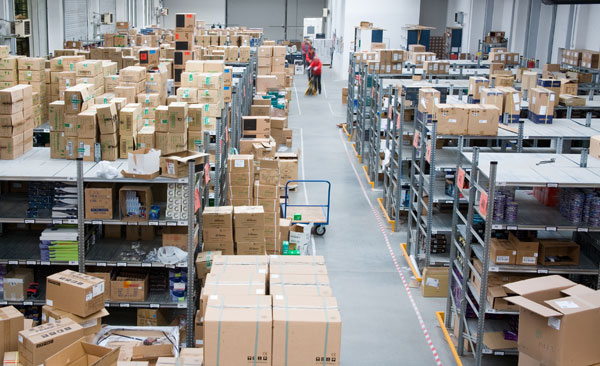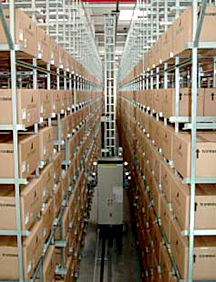How to Benchmark Your Warehouse
Measuring warehouse performance can improve your operation

Comparison is natural – and necessary
Everyone likes to see how they’re doing vs. their industry peers. This isn’t just a natural urge to compare yourself, it’s a vital part of doing business.
Benchmarking, at the heart of it, is comparing your performance to others like you. You look at your business processes and outcomes, and how they stack up to the performance metrics of industry leaders, your peers, and the best from similar operations. In warehousing, it is particularly important to understand where you are, and where you could be with reconfigurations, tweaks, and innovations that others are using to improve their numbers. What do you specifically measure? Typically this can include quality, cost, and time. Specifically, it can get much more complex.
At the end it helps you understand the success of your peers and how you can reproduce that success.
6 ways to acquire competitive data for warehouse benchmarking

- Industry Groups & Studies: When it comes to warehousing, organizations like WERC publish many helpful studies, some free, some for purchase. Those are all worth reading. For instance, the organization publishes an annual benchmark study that could help you generally understand where your operation stacks up with WERC members who took the study. If you find the chance to take such surveys, it may also help you understand the things you need to consider as you strive to improve.
- Comparison (“informal”) Groups: Many companies, including ours, utilize informal benchmarking groups. We compare notes with other material handling integrators in other markets. You can certainly find non-competitive operations in your area to collaborate with. While this process isn’t as data-driven as a pure benchmarking effort, it can be invaluable when it comes to understanding your strengths, weaknesses, and ways to improve. You can also work with similar operations in your area.
- Find a Local Partner: Identify your outbound flow, your SKU characteristics, building size, automation, and customer type and find a similar, non-competitive operation in your area. regular exchanges of information can help both parties. (see below for more characteristics to consider)
- Through consultants & industry experts: many consultants keep updated information on the industry. They may be able to tell you where you can make dramatic improvements via automation, reconfiguration, process improvement, or other avenues.
- Attend industry conferences & conventions. WERC has national and regional events every year. Many of these conferences hone in on what’s being done by the industry’s top performers and can lead you to a wealth of information.
- Leverage your vendors: Warehouse supplies vendors (packaging companies, material handling companies, scale vendors, maintenance companies) and freight carrier managers are often excellent sources of information, as they are inside many other facilities in your area. They may be unable to share certain proprietary processes, but they will definitely have the experience to point you in the direction of similar operations.
Performance Measurements to Consider When Choosing Benchmark Partners

- SKU Count.If you have 50,000 SKU’s there is something to learn benchmarking with a company that deals with 200,000 (or 8,000), but more to learn from operations within your own “neighborhood” of 40,000 to 60,000. This is highly variable depending on what’s being stored/distributed, of course.
- SKU Pick Characteristics: The size of products and picking methods (static bins, via flow rack, bulk racking) are very helpful in establishing good comparisons. Don’t get hung up if you and your benchmarking group or partner aren’t doing exactly the same things – part of the process is to highlight important differences.
- Shipping/ Receiving Levels: You want your lines received and shipped daily to compare to similar operations. If you bring in 2,500 a day and ship out 2,500 a day, you want to measure against operations that have roughly the same product flow.
- Building size: Facility square footage.
- Product Size, Shape & Packaging Types: If you are dealing with soft packs and benchmarking against crates, the numbers will skew. Are the number of parcels versus pallet shipments roughly similar, if you do both?
- Process Issues: If you must consolidate products or do minor assembly before they are shipped, it changes the situation. These types of issues may need to be abstracted if you have an extremely unique process that most of your peers don’t, but in general the closer you can get to your operation in terms of tasks and configuration, the better. Special processes such as customer labeling or quick ship demands are also helpful to establish valid benchmarks.
- Level of automation: Benchmarking a highly automated operation with a manual one won’t result in as much useful information. Consider WMS, robotics, conveyor systems (including sorters), palletizing systems, carousel or ASRS utilization, and other automated systems. They change the game significantly when it comes to useful benchmarks.
Related articles:
- Warehousing Key Performance Indicators
- 5 Key Warehouse Performance Metrics for an Effective Operation
- Warehouse Ergonomics: A Quick Guide
Tags: ROI
Scott Stone is Cisco-Eagle's Vice President of Marketing with 35 years of experience in material handling, warehousing and industrial operations. His work is published in multiple industry journals an websites on a variety of warehousing topics. He writes about automation, warehousing, safety, manufacturing and other areas of concern for industrial operations and those who operate them.



